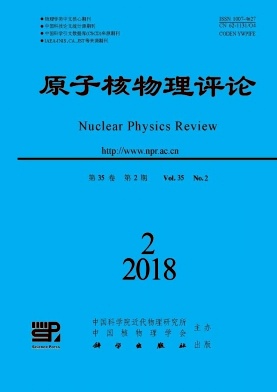|
[1]
|
XIA Jiawen, ZHAN Wenlong, WEI Baowen, et al. Nucl Instr Meth A, 2002, 488(1):11. |
|
[2]
|
ZHANG Xiaohu, YUAN Youjin, XIA Jiawen, et al. Chinese Physics C, 2014, 38(10):74. |
|
[3]
|
ZHANG Xiaohu. Beam dynamics design and research of the Linac injectors in HIRFL[D]. Lanzhou:Institute of Modern Physics, Chinese Academy of Sciences, 2014:127. (in Chinese) (张小虎. HIRFL重离子直线注入器的动力学设计与研究[D]. 兰州:中国科学院近代物理研究所, 2014:127.) |
|
[4]
|
JAMESON R A. NATO ASI Series B:Physics, 1988, 178:497. |
|
[5]
|
LIU G, LU Y R, HE Y, et al. Nucl Instr Meth A, 2013, 701(3):186. |
|
[6]
|
YIN X J, YUAN Y J, XIA J W, et al. Phys Rev ST Accel Beams, 2016, 19(1):010402. |
|
[7]
|
LI C, SUN L, HE Y, et al. Nucl Instr Meth A, 2013, 729(1-2):426. |
|
[8]
|
WANG Z J, HE Y, JIA H, et al. Proceedings of LINAC2012[C]. Tel-Aviv, Israel, 2012. |
|
[9]
|
KLABUNDE J. Proceedings of the 1988 Linear Accelerator Conference[C]. Williamsburg, Virginia, USA, 2012. |
|
[10]
|
KLABUNDE J. Proceedings of the 1992 Linear Accelerator Conference[C]. Ottawa, Ontario, Canada, 1992. |
|
[11]
|
RATZINGER U, KASPAR K, MALWITZ E, et al. Nucl Instr Meth, 1998, 415(1):281. |
|
[12]
|
KASPAR K, RATZINGER U. DESIGN OF THE GSI 36 MHZ RFQ ACCELERATOR ON THE BASE OF MAFIA CALCULATIONS, 1996. |
|
[13]
|
KOSCIELNIAK S, LAXDAL R E, LEE R, et al. Particle Accelerator Conference, 1997[C]. Vancouver, British Columbia, Canada, 1997:1102. |
|
[14]
|
LAXDAL R E, BAARTMAN R A, ROOT L. Proceedings of the 1999 Particle Accelerator Conference[C]. New York,1999:3534. |
|
[15]
|
CRANDALL K R. Proceedings of the 1979 Linear Accelerator Conference[C]. Montauk, New York, USA, 1979:205. |
|
[16]
|
ZHANG C, SCHEMPP A. Nucl Instr Meth A, 2008, 586(2):153. |
|
[17]
|
ZHANG C, SCHEMPP A. Nucl Instr Meth A, 2009, 609(2-3):95. |
|
[18]
|
CHUAN ZHANG. Linac Design for Intense Hadron Beams[D]. Frankfurt am Main, 2009(12):54. |
|
[19]
|
KASPAR K, RATZINGER U. the 5th European Particle Accelerator Conference[C]. Sitges, Barcelona, Spain, 1996. |
|
[20]
|
RATZINGER U, KASPAR K, MALWITZ E, et al. Nucl Instr Meth A, 1998, 415(1):281. |
|
[21]
|
CST-Computer Simulation Technology. www.cst.com. |
|
[22]
|
LIU Ge. Study on the Theoretical Design and Experimental Research of a Continuous Wave High Charge State Heavy Ion RFQ[D]. Beijing:Peking University, 2014:68. (in Chinese) (刘戈. 连续波高电荷态重离子RFQ加速器的理论设计与实验研究[D]. 北京大学, 2014:68.) |
|
[23]
|
URIOT D. TraceWin[M]. CEA Saclay, 2013. |
|
[24]
|
BAILEY R. Proceedings of the CAS-CERN Accelerator School:RF for accelerators, Ebeltoft, Denmark, 2011:125. |






 甘公网安备 62010202000723号
甘公网安备 62010202000723号 DownLoad:
DownLoad: